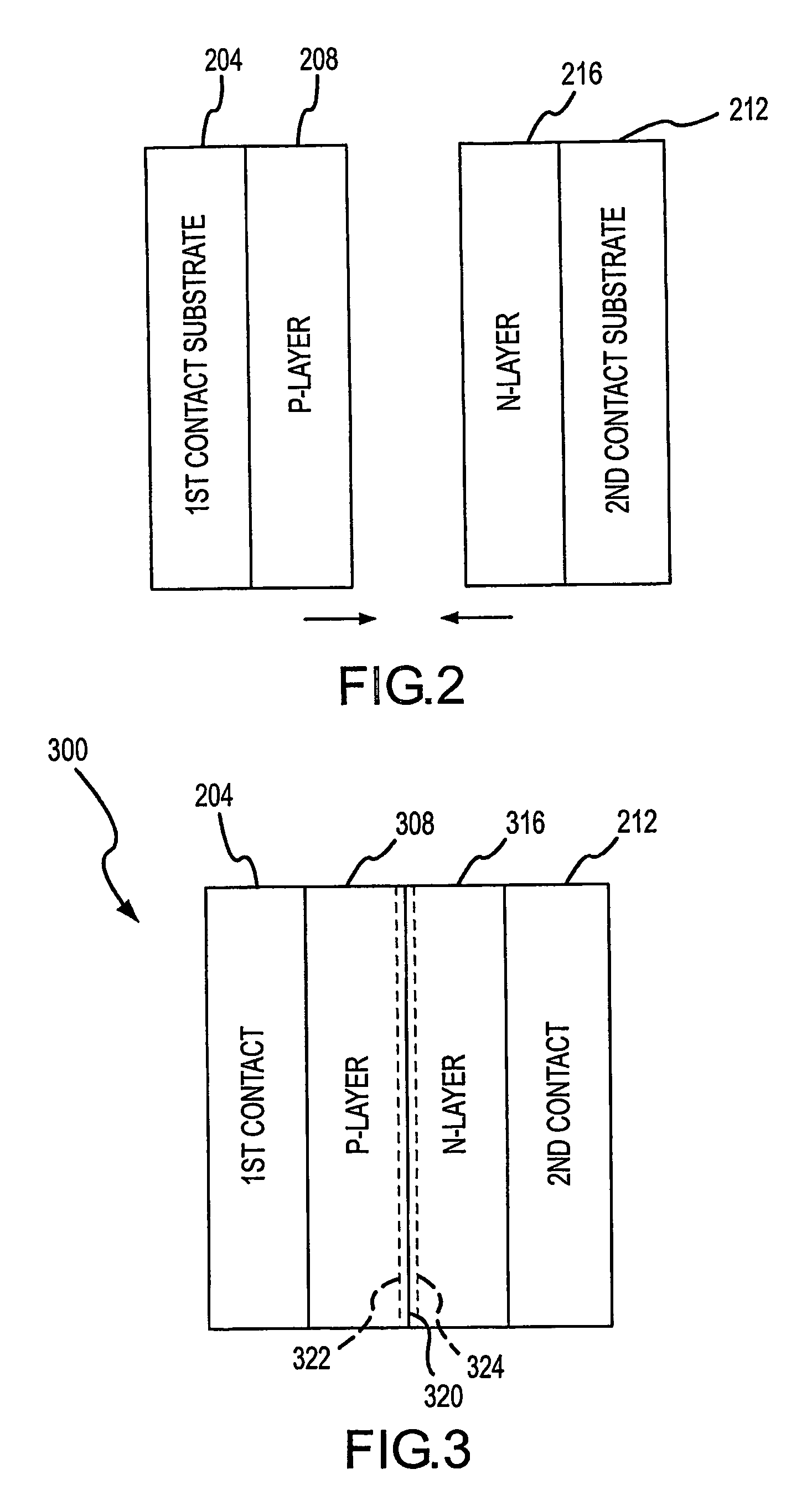Organic photovoltaic cells with an electric field integrally-formed at the heterojunction interface
a photovoltaic cell and heterojunction technology, applied in the field of photovoltaic cells and semiconductors, can solve the problems of recombination, high dollar and environmental costs associated with manufacturing of inorganic solar cells, and increasing costs and shortages of more standard energy sources
- Summary
- Abstract
- Description
- Claims
- Application Information
AI Technical Summary
Benefits of technology
Problems solved by technology
Method used
Image
Examples
Embodiment Construction
[0023]The present invention is directed generally to a method of fabricating a bi-layer organic photovoltaic (OPV) cell that includes dispersing semiconductor nanocrystals in a binder, such as a polymer binder (e.g., an epoxy) that is applied to conductive substrates to form an n-type substrate and a p-type substrate. The two substrates are then bound together such that there is good adhesion between the n-layer and p-layer and crystals within these layers to form a bi-layer OPV cell with improved efficiency (i.e., up to 5 percent or more whereas existing OPV cells typically have 2 percent or lower efficiencies). As will become clear from the following description, one important aspect of the method of the invention is building an electric field at the p-n heterojunction or interface between the semiconductor films so as to control detrimental recombination which occurs almost solely at this interface. The electric field is provided integral to the OPV cell by covalently binding ion...
PUM
| Property | Measurement | Unit |
|---|---|---|
| thicknesses | aaaaa | aaaaa |
| thickness | aaaaa | aaaaa |
| size | aaaaa | aaaaa |
Abstract
Description
Claims
Application Information
 Login to View More
Login to View More - R&D
- Intellectual Property
- Life Sciences
- Materials
- Tech Scout
- Unparalleled Data Quality
- Higher Quality Content
- 60% Fewer Hallucinations
Browse by: Latest US Patents, China's latest patents, Technical Efficacy Thesaurus, Application Domain, Technology Topic, Popular Technical Reports.
© 2025 PatSnap. All rights reserved.Legal|Privacy policy|Modern Slavery Act Transparency Statement|Sitemap|About US| Contact US: help@patsnap.com



